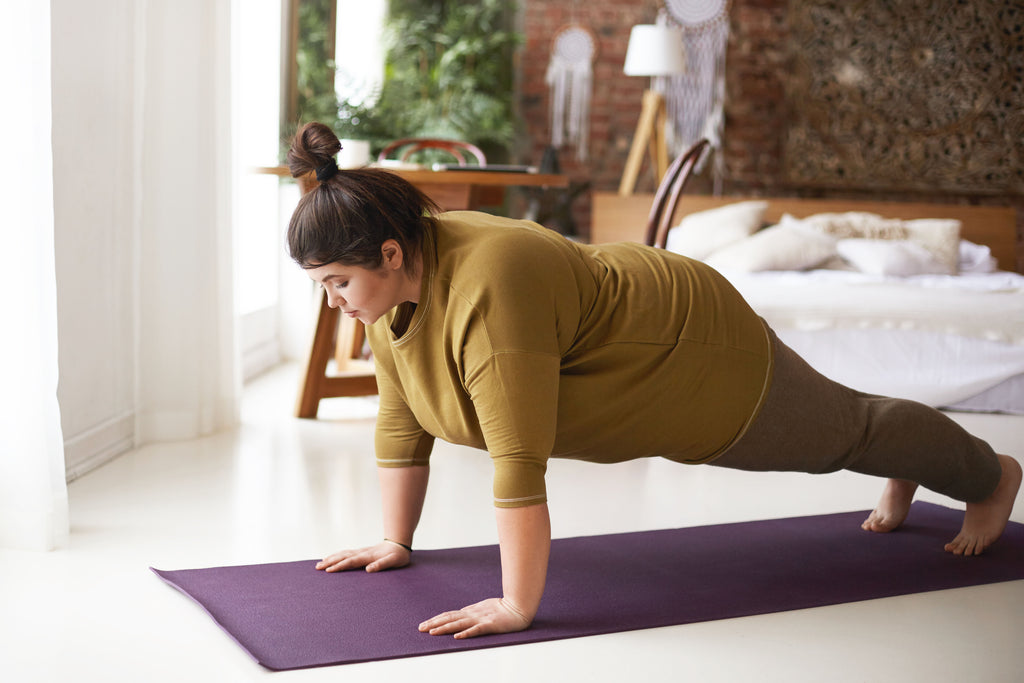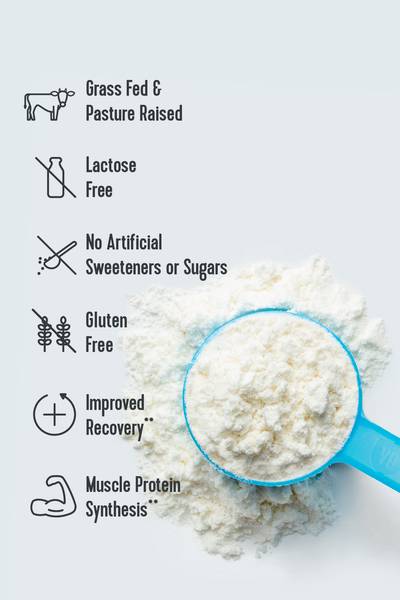Getting to the gym doesn't always work for everyone; maybe it doesn't fit your budget or your schedule. But that doesn't mean your fitness goals have to change. If you're used to working out at home after a year of avoiding the gym to stay safe and aren't ready to head back just yet, a home workout plan is a great option.
So we tapped two certified personal trainers, Jessie Fiedler and David Hanono, to help you figure out a home workout plan that works for your goals.
Vital Note: This article has been made available for informational and educational purposes only. It is not intended to be a substitute for professional medical advice, diagnosis, or treatment. Always seek the advice of your physician or another qualified health provider with any questions you may have regarding a medical condition. Your licensed healthcare professional can best provide you with the diagnosis and treatment of any medical condition and assist you as well in deciding whether a dietary supplement will be a helpful addition to your regimen.
Is it effective to work out at home?
Working out at home can be effective just as working out at the gym, Fiedler tells Lively. But, it all comes down to what you're utilizing as a workout plan, and if you're following one that will help you reach your goals.
"Working out at home can prove to be more time efficient," says Hanono.
What is a good at home workout routine?
First, ask yourself what your goals are, says Fiedler. Are you just getting started or are you more advanced and looking to gain muscle?
Some athletes will get great results from breaking their week up by specific body parts, for example back day, chest and shoulder day, and lower-body day. Others may find success in a total-body workout, a push/ pull workout, incorporating plyometrics or even incorporation high-intensity interval training (HIIT), says Hanono.
“Any great workout will have your fundamental movements, targeting full-body and maybe an increase in cardio depending on the goals per individual person," Fiedler says.
Note: Fundamental movements are upper body and lower body push (such as a push-up or squat); upper body and lower body pull (such as a seated row or glute bridge); rotation (Russian twist) and anti-rotation (plank) and carry (Farmer’s walk).
Related Articles
How can you create a home workout plan?
This comes down to what you have available to you. The average person that is doing at home workouts does not typically have access to a lot of equipment. If that's you, Fiedler recommends targeting full-body workouts with rest days in between, rather than split routines. Depending on your goals and fitness level, Fiedler suggests four days a week focusing on strength training, two to three days of cardio, and aiming to get at least 10,000 steps a day to see effective results.
How can someone build muscle working out at home?
"In order to build muscle, you need to challenge the muscle," says Hanono. Depending on your fitness level, that may mean moving through exercises much more slowly or increasing the reps, sets or timing of each move (including rest) as you progress. If equipment you have doesn’t allow for the increase of weights, investing in resistance bands (which are relatively inexpensive) is a great alternative, Hanono tells Lively. You can also use household items, says Fiedler. (think cans, jugs of water or books).

Try These Two 30-Minute Home Workouts
30-Minute Full-Body Workout Created By Jessie Fiedler
How to do it: Perform 12 reps of each move, taking 30 seconds of rest between each exercise and 60 seconds of rest between each set. Complete 3 rounds.
Squat
Start standing with feet hips-width distance apart and hands clasped in front of chest. Initiate the movement by sending hips back as if you’re sitting into a chair. Bend knees to lower down as far as possible, keeping chest lifted, lower back neutral and movement controlled. Press through heels to stand back up to starting position. Repeat.
Bent-Over Row
Hold a dumbbell (or other weighted object) in right hand. Bend over to rest your left hand and left knee on bench with flat back and extend right arm toward floor. Engage your core and bend elbow and pull upper arm backward to pull the dumbbell upward as far as you can without rotating your body. Slowly lower dumbbell back to starting position. Complete 12 reps, then repeat on left side.
Push-Up
Start in a high plank position with shoulders stacked over wrists. Engage core and glutes, keeping body in a straight line. Bend elbows to lower your chest to the floor. Keeping core engaged, push back up to starting position. Repeat.
Deadlift
Stand with feet hips-width distance apart, and slight bend in knees. Keeping shoulders back and chest lifted, send hips back to hinge forward, with straight back and engaged core. Engage hamstrings and glutes as you lower weights (dumbbells, kettlebells or grocery bags with cans) toward the floor. Lower as far as you can, then push hips forward to return to the starting position. Repeat.
Plank
Start in a high plank position with shoulders stacked over wrists. Engage core and glutes, keeping body in a straight line and hold this position. Option to modify and perform a forearm plank.
Over-Under Crunch
Lie faceup. Then, engage the core as you draw knees toward the chest and lift the upper body off the floor, keeping head and neck relaxed. Reach hands under your knees toward your heels. In a controlled movement, straighten legs so heels hover a few inches off the ground and lean back so back hovers a few inches off the ground. Then, engage the core as you draw knees toward the chest and lift the upper body off the floor, keeping the head and neck relaxed. Reach hands over your knees, then keep core engaged as you straighten legs and return back to hover a few inches above the ground. Continue to alternate reaching over and under your knees.
30-Minute Full-Body Workout Created By David Hanono
How to do it: Perform each exercise for 20 seconds, taking 1 minute of rest between each move. Complete 10 rounds.
Squat
Start standing with feet hips-width distance apart and hands clasped in front of chest. Initiate the movement by sending hips back as if you’re sitting into a chair. Bend knees to lower down as far as possible, keeping chest lifted, lower back neutral and movement controlled. Press through heels to stand back up to starting position. Repeat.
Push-Up
Start in a high plank position with shoulders stacked over wrists. Engage core and glutes, keeping body in a straight line. Bend elbows to lower your chest to the floor. Keeping core engaged, push back up to starting position. Repeat.
Prone Cobra
Lie facedown, hands even with hips, but slightly out to the sides, palms resting on the floor. Contract your back, and lift your chest and arms off the floor. Pause at the top, the return to starting position. Repeat.
Mountain Climber
Start in a high-plank position with shoulders stacked over wrists. Keeping back flat and core engaged, drive right knee forward toward chest, then quickly return to starting position. Repeat on the left side, and continue alternating.
Jumping Jack
Stand with legs together, arms at sides. Bend knees slightly and jump in the air, extending feet wider than shoulder width and stretch arms overhead. Land softly in a wide stance with arms above head. Bend knees slightly and jump to return to starting position. Repeat.
Can I expect to build muscle in 30 days?
To build muscle in 30 days is not impossible, but there are a few things to consider. When building muscle, you actually will have to increase your calories from maintenance to a surplus, increase protein intake, and often lift heavy weights. All of this takes planning and guidance from a trainer and medical professional, Fiedler says.
Keep in mind, everyone responds differently to training.
"I believe the key to this is effectively implementing these three things: a good exercise plan, smart eating rules, and the right attitude to follow both with focus and determination. Making a big alteration to your body in just four weeks is hard, but it can be done," Hanono says.
How can I train different body parts at home?
There are many ways to train your entire body, and you have many options with or without weights, depending on what kind of equipment you have available. If you want to mix up your workouts, incorporating simple, yet effective bodyweight exercises, such as squats, lunges and push-ups is a great way to train your body at home, Hanono says. You can also add resistance bands or invest in basic equipment that doesn’t take up much room, such as TRX straps. There are also plenty of ways to get creative with the space and equipment you have available.
And, Fiedler adds that the best way to get yourself set up with a proper program for your body that works with your lifestyle, helps you understand proper nutrition and set yourself up for success in general is to work with a trainer or coach (even though she is a trainer, she has her own coach).
Aside from planning your workouts, Hanono says that the secret to getting and staying healthy includes proper sleep, hydration and quality nutrition. Remember the magic happens on rest days — muscles need proper time to recover, otherwise you end up risking injury.
















